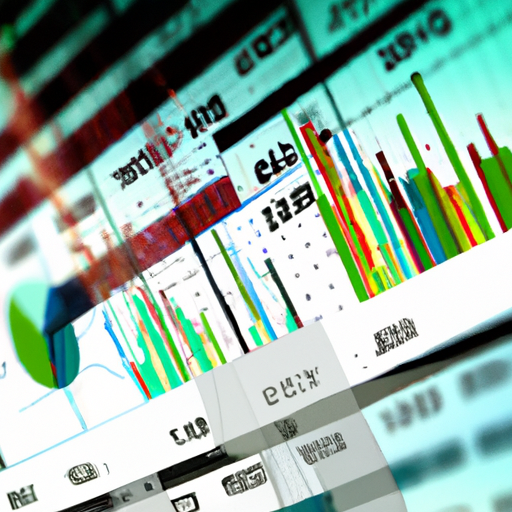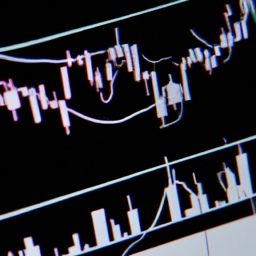Market Trend Analysis Example
So, you’ve heard about market trend analysis and you’re curious to know what it’s all about. Well, in this article, we’ll show you a practical example of market trend analysis, giving you a firsthand insight into how it works. By examining the ups and downs of a particular market, you’ll see how trend analysis can help uncover valuable insights and inform strategic decisions. Whether you’re a business owner, investor, or just someone interested in understanding market trends, this example will give you a clear picture of what market trend analysis is and how it can be applied. Get ready to gain some valuable knowledge as we take a closer look at market trend analysis through this practical example.

Table of Contents
Definition of Market Trend Analysis
Market trend analysis overview
Market trend analysis is the process of examining and evaluating historical and current market data to identify patterns and trends that can help businesses make informed decisions. By analyzing market trends, organizations can gain valuable insights into consumer behavior, industry developments, and potential opportunities and risks. This analysis enables businesses to adapt their strategies, optimize their operations, and stay ahead in highly competitive markets.
Importance of market trend analysis
Market trend analysis is crucial for businesses to stay relevant and competitive in the ever-changing market landscape. By studying and understanding market trends, businesses can identify emerging opportunities, anticipate shifts in consumer preferences, and formulate effective strategies to capitalize on these trends. It empowers businesses to make informed decisions, whether it’s launching a new product, expanding into new markets, or adjusting pricing strategies. Without market trend analysis, businesses may miss out on valuable opportunities or underestimate potential risks, leading to lost market share and decreased competitiveness.
Different approaches to market trend analysis
When conducting market trend analysis, businesses can employ various approaches depending on their goals, available resources, and industry dynamics. Some common approaches include quantitative analysis, qualitative analysis, and data visualization and interpretation. Each approach offers unique benefits and insights, enhancing the overall understanding of market trends and facilitating strategic decision-making.
Steps in Market Trend Analysis
Identifying the objective
The first step in market trend analysis is to clearly define the objective of the analysis. This involves determining the specific question or problem that needs to be addressed. Whether it’s understanding consumer behavior, evaluating the performance of a product, or identifying potential market opportunities, clearly defining the objective serves as a roadmap for the analysis and helps in selecting the appropriate methods and techniques.
Collecting relevant data
Once the objective is defined, the next step is to gather relevant data. This data may include sales figures, market reports, customer surveys, industry research, and competitor analysis. It is essential to collect reliable and accurate data to ensure the effectiveness and validity of the analysis. Both primary data (collected directly from the target audience) and secondary data (existing data from external sources) can be used to provide a comprehensive view of the market trends.
Analyzing the data
After collecting the data, the next step is to analyze it using appropriate analytical tools and techniques. This involves cleaning and organizing the data, identifying patterns and correlations, and performing statistical analyses to uncover meaningful insights. Tools such as statistical software, data mining algorithms, and business intelligence platforms can aid in the analysis process.
Interpreting the results
Once the data is analyzed, it needs to be interpreted in the context of the research objective. This involves drawing conclusions and identifying key trends and patterns that can inform decision-making. It is essential to interpret the results objectively and consider multiple perspectives to avoid biased interpretations.
Drawing conclusions
Based on the interpretation of the results, conclusions can be drawn regarding the market trends and their implications. These conclusions serve as the foundation for making informed decisions, formulating strategies, and implementing effective measures to capitalize on market opportunities or mitigate risks.
Making informed decisions
The final step in market trend analysis involves using the insights gained from the analysis to make informed decisions. This may include adjusting marketing strategies, optimizing product offerings, targeting specific customer segments, or exploring new markets. The goal is to align business decisions with the identified market trends and leverage opportunities to drive growth and profitability.

Methods and Techniques for Market Trend Analysis
1. Quantitative Analysis
Quantitative analysis involves the use of numerical data to identify and analyze market trends. It utilizes statistical techniques and mathematical models to uncover patterns, relationships, and correlations within the data. Some common methods of quantitative analysis include:
1.1 Sales data analysis
Analyzing sales data can reveal trends in consumer purchasing behavior, such as seasonal variations, product preferences, and changes in demand. By examining sales data over time, businesses can identify patterns, measure the effectiveness of marketing strategies, and make data-driven decisions.
1.2 Price analysis
Price analysis focuses on studying price fluctuations and trends in the market. It helps businesses understand consumer price sensitivity, evaluate pricing strategies, and identify opportunities to optimize pricing and maximize profitability.
1.3 Market share analysis
Examining market share data allows businesses to understand their position in the market relative to competitors. By analyzing market share trends, businesses can identify market dynamics, assess competitive threats, and develop strategies to gain or maintain a competitive advantage.
2. Qualitative Analysis
Qualitative analysis involves the examination of non-numerical data to gain deeper insights into market trends. It often relies on subjective interpretations and assessments. Some common methods of qualitative analysis include:
2.1 Customer surveys and interviews
Gathering insights directly from customers through surveys and interviews can provide valuable qualitative data. This approach helps in understanding customer preferences, satisfaction levels, and emerging trends, which may not be captured by quantitative data alone.
2.2 Focus groups
By bringing together a group of target customers, focus groups enable businesses to explore consumer opinions, perceptions, and preferences in a more interactive and exploratory manner. This method allows for in-depth discussions and richer qualitative insights.
2.3 Expert opinions
Seeking input and perspectives from industry experts, thought leaders, or professionals can provide valuable insights into market trends. Experts can offer unique perspectives, highlight emerging trends, and provide guidance based on their knowledge and experience.
3. Data Visualization and Interpretation
Data visualization techniques can play a vital role in market trend analysis by presenting complex data in a clear and understandable format. Effective data visualization tools and techniques help in identifying patterns, trends, and anomalies. Some common methods of data visualization and interpretation include:
3.1 Graphs and Charts
Graphs and charts allow for effective visualization of data, making it easier to identify trends, patterns, and relationships. Line graphs, bar charts, pie charts, and scatter plots are commonly used visualization techniques in market trend analysis.
3.2 Market trend indicators
Market trend indicators are statistical measures or tools that help in identifying and tracking market trends. Examples include moving averages, relative strength index (RSI), and Bollinger Bands. These indicators provide a comprehensive view of market conditions, guiding decision-making processes.
Tools and Technologies for Market Trend Analysis
1. Statistical software
Statistical software such as SPSS, SAS, and R are widely used for quantitative analysis. These tools offer a range of statistical tests, data visualization capabilities, and modeling techniques to analyze and interpret market trends effectively.
2. Data mining and analytics tools
Data mining and analytics tools like Tableau, Excel, and Python facilitate data exploration, pattern identification, and predictive modeling. These tools enable businesses to extract meaningful insights from large datasets and identify market trends.
3. Business intelligence platforms
Business intelligence (BI) platforms provide comprehensive analytics capabilities, combining data from various sources to generate insights and reports. Tools like Power BI and QlikView help businesses gain a holistic view of market trends and facilitate data-driven decision-making.
4. Market research tools
Market research tools such as SurveyMonkey, Qualtrics, and Google Forms enable businesses to collect and analyze qualitative and quantitative data through surveys and questionnaires. These tools simplify the data collection process and offer features for data analysis and reporting.
5. Social media monitoring tools
Social media monitoring tools like Hootsuite, Brandwatch, and Sprout Social allow businesses to track and analyze social media conversations, mentions, and trends. These tools provide insights into customer sentiment, emerging topics, and market trends in real-time.

Real-life Market Trend Analysis Examples
1. Technology Market Trend Analysis
1.1 Analyzing smartphone market trends
With the rapidly evolving smartphone industry, market trend analysis helps businesses track sales volumes, consumer preferences, and features in demand. Analyzing market trends can provide insights into the popularity of specific brands, operating systems, and features. These insights can guide manufacturers in developing new products, optimizing marketing strategies, and staying ahead of the competition.
1.2 Tracking the adoption of emerging technologies
Analyzing market trends in emerging technologies, such as artificial intelligence, virtual reality, and blockchain, can help businesses understand the adoption rate, market potential, and future growth opportunities. This analysis assists in strategic decision-making, investment planning, and identifying niche markets for innovative products and services.
2. Fashion Market Trend Analysis
2.1 Evaluating fashion trends for seasonal collections
Fashion brands and retailers rely on market trend analysis to identify popular fashion trends, styles, colors, and materials for each season. By analyzing consumer preferences, runway shows, and social media trends, businesses can make informed decisions on designing, producing, and marketing their seasonal collections, ensuring alignment with current fashion trends.
2.2 Identifying consumer preferences and demands
Market trend analysis helps fashion businesses understand consumer preferences, demands, and purchasing behavior. By analyzing data such as customer feedback, online reviews, and social media engagements, businesses gain insights into changing consumer preferences, enabling them to tailor their product offerings, pricing strategies, and marketing campaigns more effectively.
3. Financial Market Trend Analysis
3.1 Analyzing stock market trends
Investors and financial institutions use market trend analysis to analyze stock market movements, identify patterns, and forecast future market trends. Factors such as price movements, trading volumes, and key economic indicators are analyzed to make informed investment decisions, manage risks, and explore profitable opportunities.
3.2 Monitoring economic indicators
Businesses track and analyze economic indicators, such as GDP growth, inflation rates, and interest rates, to understand overall market conditions and predict market trends. This analysis helps in making strategic decisions, such as expanding or diversifying business operations, optimizing pricing strategies, and mitigating risks associated with economic fluctuations.
Challenges in Market Trend Analysis
1. Data collection and reliability
One of the key challenges in market trend analysis is collecting reliable and relevant data. Ensuring the accuracy and completeness of data can be complex, especially when dealing with large and diverse datasets. Businesses need to invest in robust data collection methods and ensure data quality to obtain reliable insights.
2. Analyzing complex and large datasets
With the advent of big data, analyzing complex and vast datasets can be challenging. Traditional analytical tools and techniques may not be sufficient to process and analyze such data effectively. Implementing advanced analytics techniques and leveraging data mining and artificial intelligence can help overcome this challenge.
3. Limited availability of historical data
In some cases, historical data may be limited or unavailable, making it challenging to identify and analyze long-term market trends. This can restrict the accuracy and reliability of trend analysis, requiring businesses to rely more on real-time data and market intelligence sources.
4. Identifying relevant market indicators
Choosing the right market indicators to analyze is crucial for accurate trend identification. With numerous potential indicators available, businesses need to carefully select appropriate indicators that align with their specific objectives and industry dynamics. This requires a deep understanding of the industry and the factors driving market trends.
5. Forecasting future market trends
Predicting future market trends based on historical data and current trends can be challenging. Market trends are influenced by various factors, including consumer behavior, technology advancements, regulatory changes, and global events. Accurate forecasting requires businesses to consider multiple variables and integrate them into their analysis effectively.

Benefits of Market Trend Analysis
1. Strategic decision-making
Market trend analysis provides businesses with valuable insights that drive strategic decision-making. By understanding market trends, businesses can identify opportunities, assess risks, and make informed choices regarding product development, market expansion, and resource allocation.
2. Identifying growth opportunities
Market trend analysis helps businesses identify emerging trends and potential growth opportunities. By analyzing consumer preferences, market dynamics, and industry developments, businesses can proactively adapt their strategies and capitalize on new markets or niches.
3. Mitigating risks and uncertainties
By monitoring market trends, businesses can identify potential risks and uncertainties early on, allowing them to develop contingency plans and strategies to mitigate potential negative impacts. This helps businesses minimize risks and navigate through changing market conditions more effectively.
4. Understanding customer behavior
Market trend analysis provides insights into customer behavior, preferences, and purchasing patterns. By understanding customer needs and preferences, businesses can customize their products and services, differentiate themselves from competitors, and create a loyal customer base.
5. Gaining competitive advantage
By analyzing market trends, businesses can gain a competitive advantage by staying ahead of the competition. By being proactive and responsive to market trends, businesses can anticipate changes, innovate faster, and deliver products and services that meet customer demands more effectively.
Conclusion
Market trend analysis is a vital tool for businesses across industries to gain insights into consumer behavior, industry developments, and potential opportunities and risks. By following the steps outlined in this article and employing appropriate methods, techniques, and tools, businesses can effectively analyze market trends and make informed decisions. Market trend analysis enables businesses to stay competitive in a rapidly changing market landscape, identify growth opportunities, mitigate risks, and gain a deeper understanding of customer needs. As technology continues to advance, the future of market trend analysis holds immense potential for further advancements and innovations in data analysis techniques and tools.






